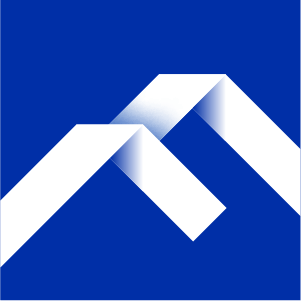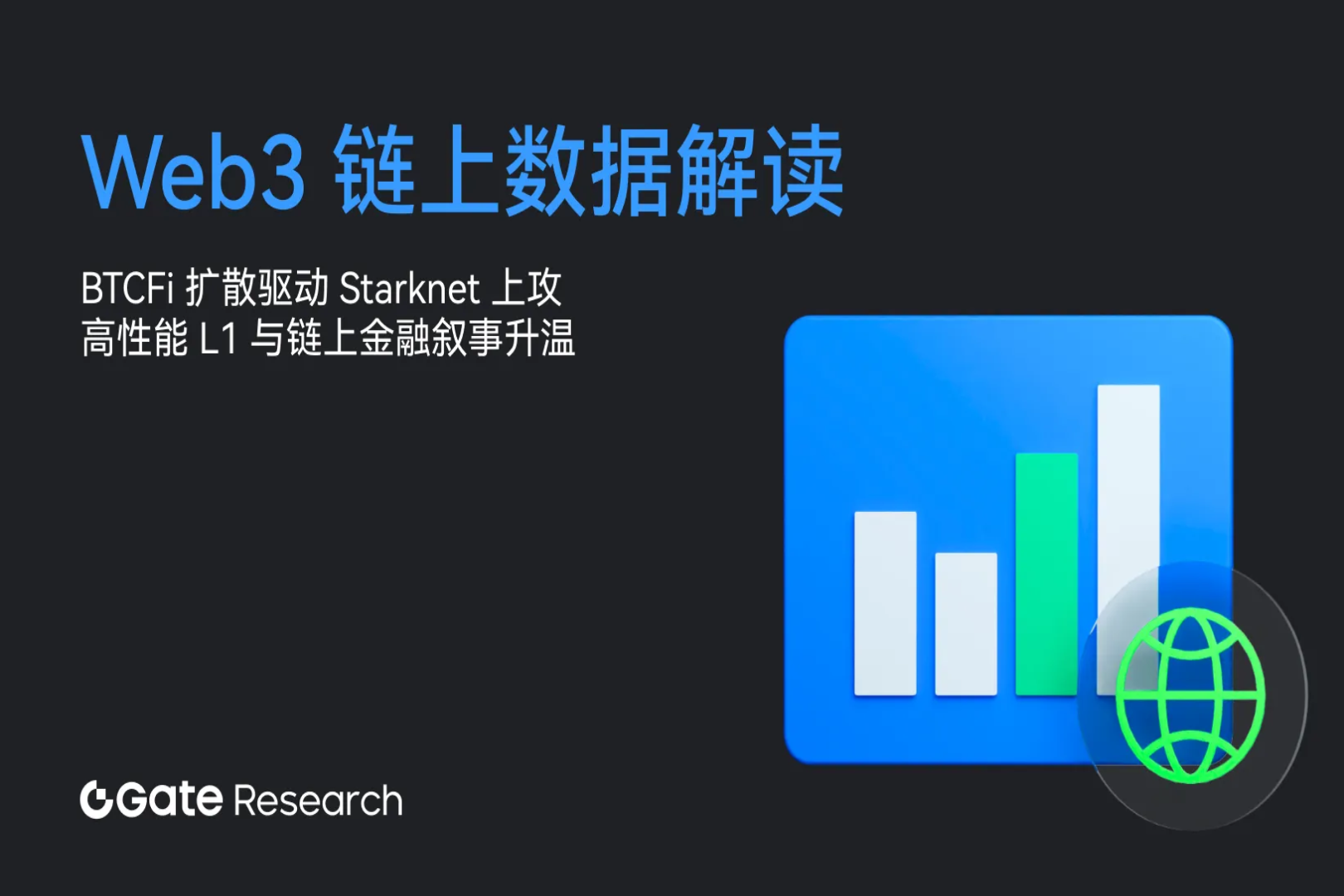Vitalik praised ZKsync, which had already created the fastest zkVM.
- 核心观点:ZKsync技术升级推动ZK生态价值重估。
- 关键要素:
- Vitalik点赞引发ZK代币暴涨超2.5倍。
- Altas升级实现1秒最终确认和超低费用。
- 单GPU验证速度达行业最优水平。
- 市场影响:加速ZK技术落地,改善L2碎片化问题。
- 时效性标注:中期影响
Original author: Eric, Foresight News
On November 1, Vitalik quoted a tweet from the founder of ZKsync about the ZKsync Atlas upgrade and praised ZKsync for doing a lot of "underrated but valuable work for the Ethereum ecosystem".
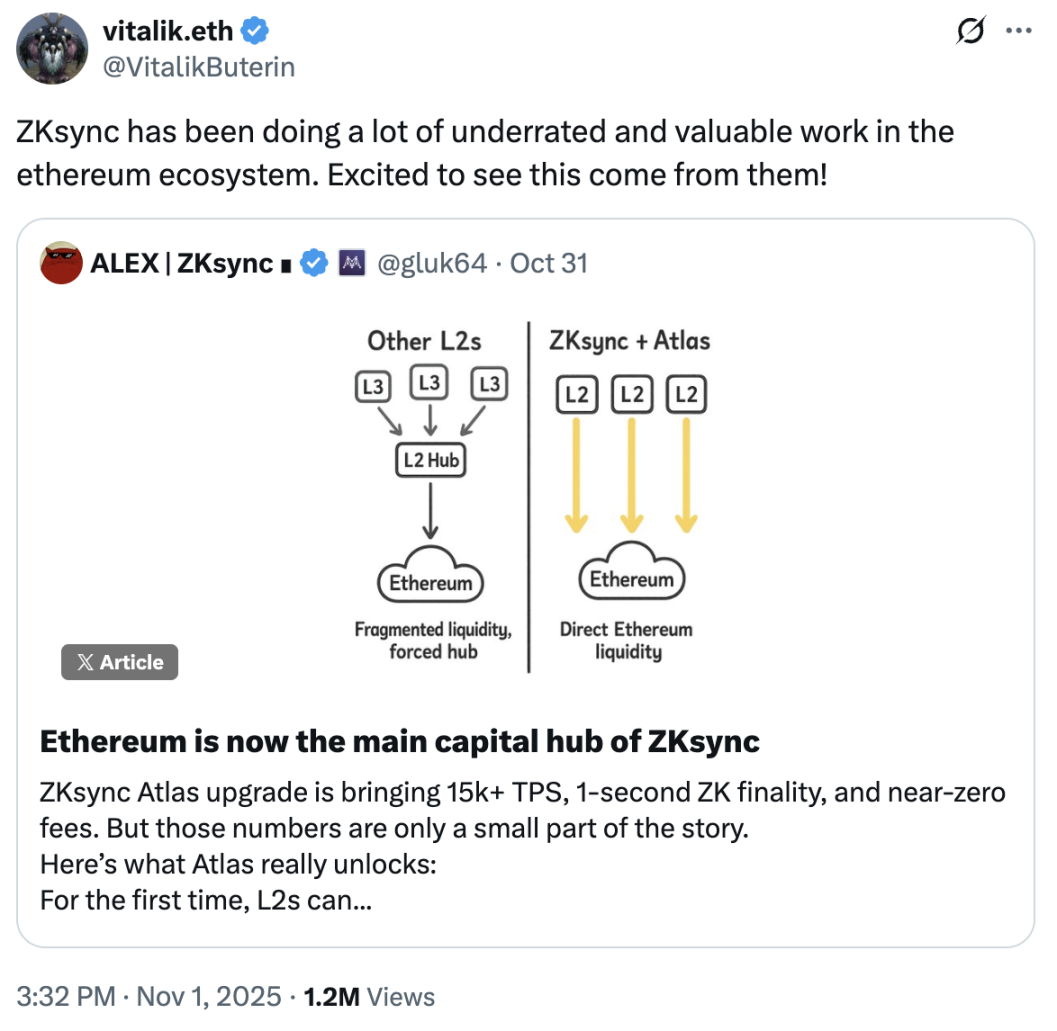
The market reacted quickly to Vitalik's words, with the price of ZK rising by more than 2.5 times over the weekend. Tokens in the ZK ecosystem, including ALT (AltLayer), STRK (Starknet), SCR (Scroll), and MINA (Mina), also saw significant gains.
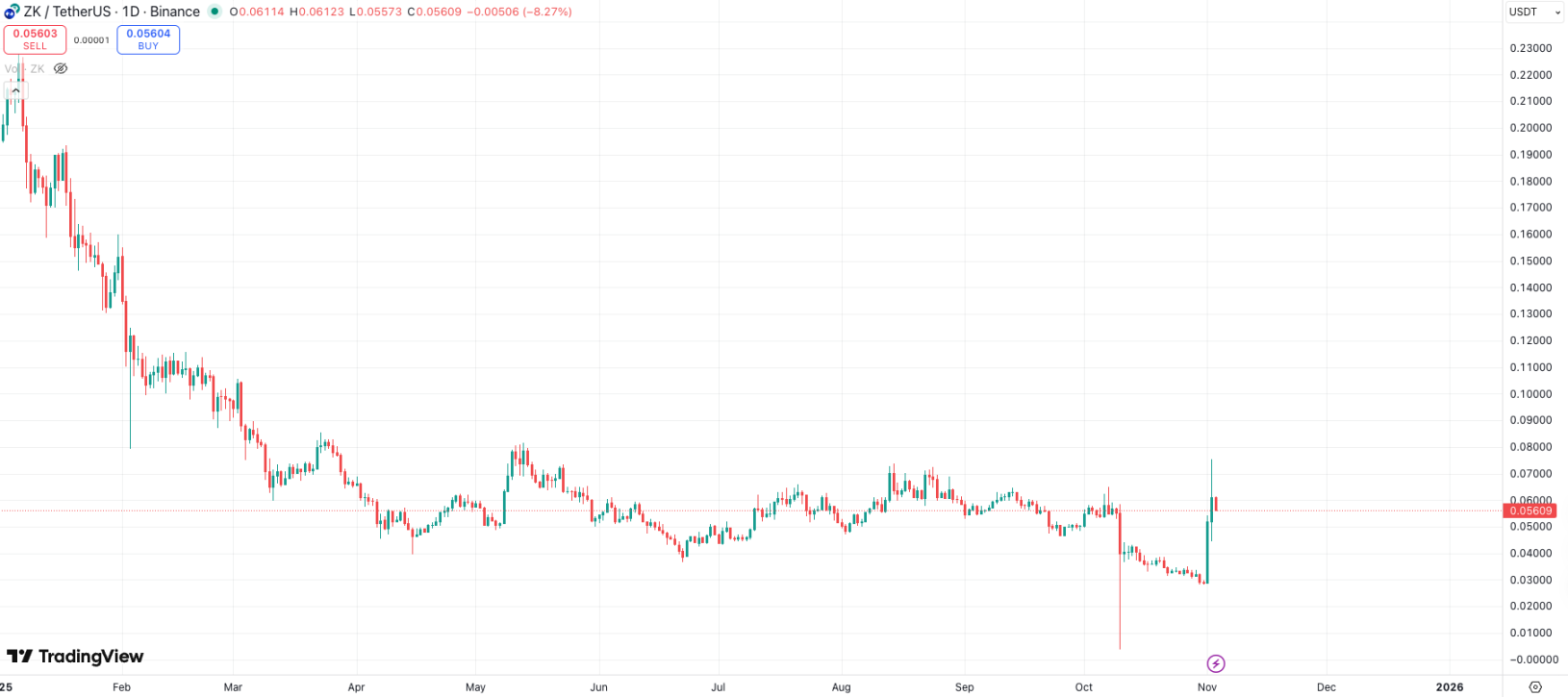
After learning about the ZKsync Altas upgrade, we realized that what ZKsync has done may really be underestimated.
Fast, small but expensive ZKP
The Ethereum Foundation has been promoting ZKP (Zero Knowledge Proof) since its early days, which is essentially aimed at solving the problems of slow verification speed and large amount of verification data.
ZKP is essentially a mathematical probability problem. To illustrate its principle with a somewhat imprecise example: Suppose someone claims to have solved the "Four Color Theorem." How can we determine if this person has actually solved it without fully disclosing their solution? The solution using zero-knowledge proofs is to select certain portions of the graph and prove that no two adjacent pixels in these portions share the same color. When the number of selected portions reaches a certain value, we can prove that the probability of this person solving the Four Color Theorem has reached 99.99%...%. At this point, we have achieved proof that they have indeed solved the Four Color Theorem without knowing the full picture.
This is what people often hear as zero-knowledge proof: "proving that something was actually done without knowing how it was done." The reason ZKP is being heavily promoted in the Ethereum ecosystem is because its theoretical speed limit is much faster than transaction-by-transaction proofs, and the generated proofs themselves involve very little data.
The speed is fast because ZKP doesn't need to know the whole picture; it only needs to perform the challenge. For example, to verify an Ethereum block, the current method involves each node verifying basic issues such as whether the execution address of each transaction has sufficient balance. However, if only one node verifies each transaction through ZKP and generates a "proof," other nodes only need to verify that the "proof" itself is reliable. More importantly, the amount of data in this "proof" is very small, so its transmission and verification speed is extremely fast, while the cost of storing data is also lower.
The reason why this technology, which has so many advantages, is not widely adopted is simply because it is too expensive.
While ZKP doesn't require reproducing the entire process, the challenge itself consumes a significant amount of computing power. While a massive buildup of GPUs, like in the AI arms race, could achieve even faster speeds, not everyone can afford such costs. However, if algorithmic and engineering innovations can reduce the required computing power and the time to generate proofs with lower computing power to a certain extent, achieving a balance between Ethereum's price increases driven by technological innovation and the cost of purchasing GPUs for node setup, then this project has potential.
Therefore, many ZK concept projects and open-source developers in the Ethereum ecosystem are focusing their efforts on combining ZKP with Ethereum by generating ZK proofs faster and at a lower cost. This is why the Brevis team recently achieved an average proof time of 6.9 seconds for Ethereum blocks (99.6% of proof times are less than the current average Ethereum block time of 12 seconds) at half the cost of the SP1 Hypercube solution (64 RTX 5090 GPUs), which garnered widespread praise from the Ethereum community.
Although the cost of the GPU still exceeds $100,000, it at least proves that the speed has dropped to the level before ZKP, and the task now is to reduce costs.
The Altas upgrade achieves 1-second ZK finality.
Many people may not know that ZKsync's open-source zkVM, ZKsync Airbender, is the fastest zkVM for single-GPU verification. According to Ethproofs data, using a single 4090 ZKsync Airbender, the average verification time is 51 seconds, costing less than one cent, both being the best performance among zkVMs.

According to data provided by ZKsync, excluding recursion, Airbender's average time to verify the Ethereum mainnet using a single-block H100 and ZKsync OS storage model is 17 seconds. Even including recursion, the total average time is only around 35 seconds, which ZKsync believes is significantly better than requiring dozens of GPUs to achieve verification within 12 seconds. However, since only data on an average of 22.2 seconds using two GPUs is currently available, the actual performance is still inconclusive.
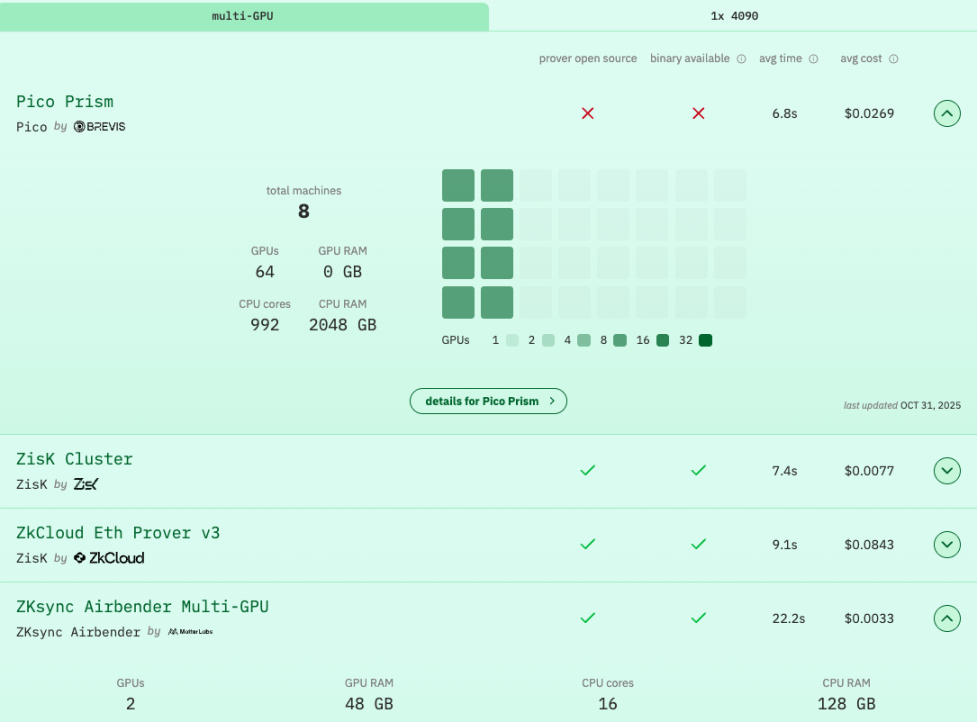
All of this is not solely due to Airbender; algorithmic and engineering optimizations are only one aspect. The key to maximizing performance lies in its deep integration with the ZKsync technology stack. More importantly, it demonstrates that implementing real-time proofs on the Ethereum mainnet using a single GPU is possible.
In late June, ZKsync launched Airbender, and the Atlas upgrade was released the day before the National Day holiday. This upgrade, which integrates Airbender, has significantly improved ZKsync's throughput, confirmation speed, and cost.
In terms of throughput, ZKsync has made engineering optimizations to the sorter: it minimizes the overhead of synchronization by using independent asynchronous components; it separates the state required by the virtual machine, the state required by the API, and the state required to generate zero-knowledge proofs or verify zero-knowledge proofs at the L1 layer, thereby reducing unnecessary component overhead.
According to ZKsync's field tests, the TPS reached 23k, 15k and 43k for high-frequency price updates, stablecoin transfers in payment scenarios and native ETH transfers, respectively.
Another significant leap forward came from Airbender, which helped ZKsync achieve 1-second block confirmation and a cost of $0.0001 per transaction. Unlike verifying mainnet blocks, ZKsync only verifies the validity of state transitions, thus requiring far less computation. Although transactions achieving ZK finality still need to be verified on the mainnet to achieve L1 finality, ZK verification itself demonstrates the validity of the transaction, making L1 finality more of a procedural guarantee.
In other words, transactions executed on ZKsync only require ZKP verification to be fully confirmed as valid. Coupled with significantly reduced costs, ZKsync achieves, in their own words, an application scenario that only Airbender can provide:
The first applications that come to mind are on-chain order books, payment systems, exchanges, and automated market makers. Airbender enables the system to perform verification and settlement at extremely high speeds, reducing the risk of rollbacks for these applications on-chain.
The second point is something many current L2 blockchains cannot achieve: supporting interoperability between public and private systems (such as ZKsync's Prividiums) without the need for a third party. Prividiums is an infrastructure launched by ZKsync to help enterprises build private blockchains. For enterprises, the requirements for blockchain are fast settlement and privacy. Fast settlement goes without saying, and ZKP's inherent privacy allows enterprise private blockchains to verify transaction validity without exposing the blockchain's own ledger information when interoperating with public blockchains. The combination of these two factors even meets the settlement time requirements stipulated in the compliance requirements for on-chain securities and foreign exchange trading.
This may explain why ZKsync has become the second largest tokenized RWA asset issuance network after Ethereum.
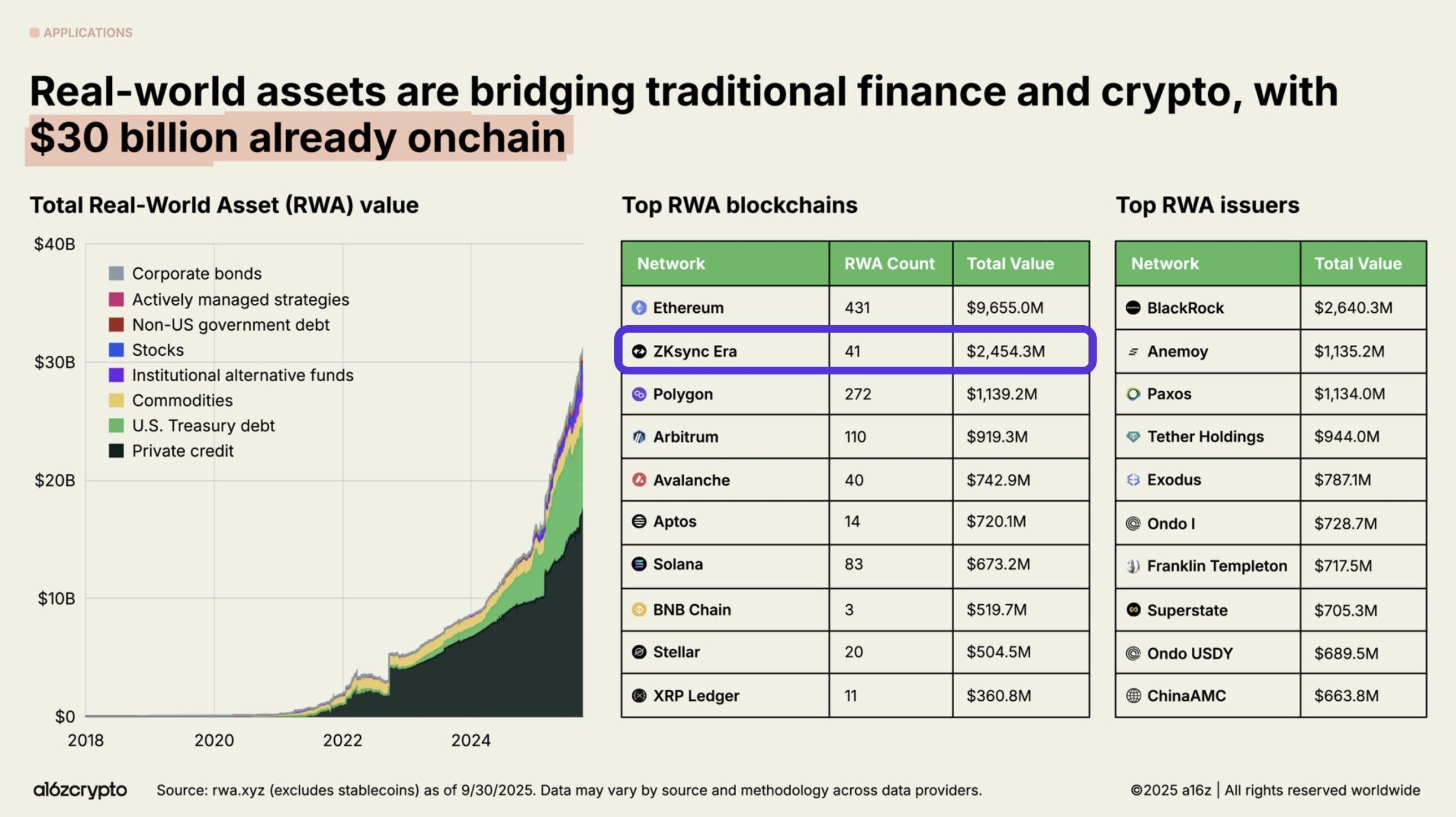
ZKsync is also proud to say that all of this is only possible with the Atlas upgrade: the sorter provides low-latency transaction packaging, Airbender generates proofs in a second, and then the Gateway verifies and coordinates cross-chain messages.
Connect L1 and L2
As Vitalikretweeted , ZKsync founder Alex believes that after the Atlas upgrade, Zksync has truly achieved connectivity to the Ethereum mainnet.
Currently, ZKsync's transaction final confirmation time (approximately 1 second) is shorter than Ethereum's mainnet block time (average 12 seconds). This means that institutional and RWA transactions conducted on ZKsync are essentially the same as those on the Ethereum mainnet, awaiting confirmation from the Ethereum mainnet. This also means that ZKsync does not need to repeatedly establish liquidity hubs on L2; it can directly use the mainnet's liquidity. This is because ZK Rollups do not require a 7-day challenge period for cross-chain transactions with the mainnet like OP Rollups, and the Atlas upgrade further accelerates this process.
This has improved the L2 fragmentation problem that has been discussed in the Ethereum community recently. L2 and L1 are no longer two separate chains, but are connected as one through fast confirmation and verification. For the first time, L2 can truly be called a "scaling network".
When ZKsync and Scroll first launched on the mainnet, transaction confirmation speeds and gas fees were no different from, or even higher than, those on the mainnet. This was essentially because there hadn't yet been systematic optimization of the ZKP algorithm and engineering at launch, resulting in slow verification speeds and high costs, which at the time triggered a crisis of confidence in ZK Rollups. Today, Optimism and Arbitrum are gradually transitioning from OP Rollups to ZK Rollups (or a combination of both). Further improvements in cost and speed from ZKSync and other ZK Rollups, as well as Scroll's decentralized ZKP, have transformed from "nonsense" into something to look forward to.
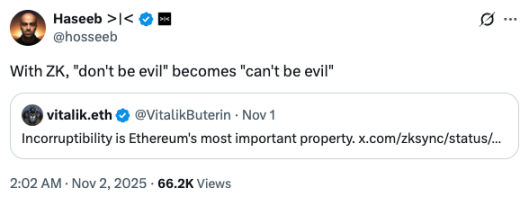
From being universally condemned to becoming highly sought after, ZK has seen a glimmer of hope. With the multi-signature functionality of the sorter and cross-chain bridges achieving complete decentralization, it may truly be possible to achieve what Dragonfly Managing Partner Hasseb Qureshi described as "can't be evil."

